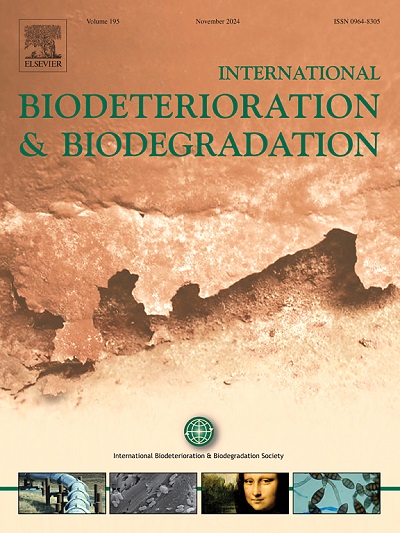在文化遗产研究中架起微生物生物膜与生物退化之间的桥梁
IF 4.1
2区 环境科学与生态学
Q2 BIOTECHNOLOGY & APPLIED MICROBIOLOGY
International Biodeterioration & Biodegradation
Pub Date : 2025-02-01
DOI:10.1016/j.ibiod.2025.106001
引用次数: 0
摘要
近年来,文化遗产研究利用了新的技术,特别是组学,这对文化遗产管理和保护的科学研究和知识获取方式产生了巨大的影响。高通量测序(High-throughput sequencing, HTS)技术使我们对复杂的微生物世界在群落组成和多样性方面有了更深入的认识,奠定了良好的基础知识。然而,与此同时,造成遗产破坏的机制或具体的生化反应尚未被确定,更重要的是,尚未在很大程度上或在坚实的基础上得到证实。大多数报告假设或采用统计相关性作为结论生物变质发生的证据。正因为如此,对文化遗产的研究必须抓住关键的机会,用额外的和创新的方法来扩展目前采用的研究实践,以便能够识别和证实特定微生物的生化和(生态)生理功能,从而建立物理和化学科学的支持结果,以推进我们的知识基础和研究框架或结构。为了在了解文化遗产的生物退化以及保护和管理方面取得重大进展,需要一种新的和改进的研究范式。本文章由计算机程序翻译,如有差异,请以英文原文为准。
Bridging the link between microbial biofilm and biodeterioration in cultural heritage research
Cultural heritage research has taken advantage of new techniques recently, specifically -omics, which have a huge impact on the ways scientific research conducted and knowledge obtained on cultural heritage for management and protection. High-throughput sequencing (HTS) technology has advanced our understanding of the complex microbial world in terms of the community composition and diversity in great depth to pave a good foundation knowledge. However, at the same time, the mechanism or specific biochemical reactions responsible for the destruction of heritage has not been identified and, more importantly, confirmed to a large extent or on a solid ground. Majority of the reports assume or take statistical correlation as evidence for conclusion on the biodeterioration taking place. Because of this, research on cultural heritage must embrace the critical opportunities to expand the research practice currently adopted with additional and innovative methods so that the biochemical and (eco)physiological functions of the specific microbes can be identified and substantiated for establishment of the supporting results of physical and chemical sciences to advance our knowledge base and the research framework or structure. A new and improved research paradigm is required to make significant progress on the research efforts to understand biodeterioration of cultural heritage and also for the protection and management.
求助全文
通过发布文献求助,成功后即可免费获取论文全文。
去求助
来源期刊
CiteScore
9.60
自引率
10.40%
发文量
107
审稿时长
21 days
期刊介绍:
International Biodeterioration and Biodegradation publishes original research papers and reviews on the biological causes of deterioration or degradation.

 求助内容:
求助内容: 应助结果提醒方式:
应助结果提醒方式:


